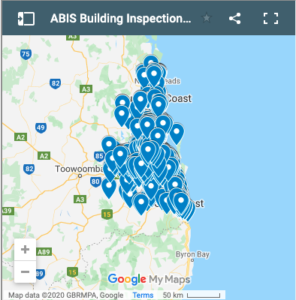Oxley (4075)
Located 11 km to Brisbane’s south-west and lying between Brisbane River to the north and Oxley Creek to the east, Oxley (4075) was originally named for the explorer, John Oxley and today is a mix of residential, rural and industrial. Because of its proximity to both waterways, Oxley is prone to inundation with flooding as occurred in 2010. The land was first sold in 1851 and subdivision began in 1864. Although rail connected Oxley to Brisbane, it was the road to Ipswich which spurred its development because Oxley was a resting point for Cobb & Co coaches on route to Toowoomba. To accommodate travellers, a hotel was built in 1860 and other businesses were attracted to the area.
In 1870 a school was opened, followed by a creamery in 1873 and a post office and police station in 1874. This led to a small residential estate and on the remaining farmland, dairying became prevalent. The Brisbane flood of 1893 slowed housing development but William Brittain established his brickworks and clay pits in the area in 1899. These were finally closed in the mid-1990s for residential redevelopment and the kiln stack was demolished because it was attracting lightning strikes. In 1904 a small goods factory was established and a police academy was opened. The Oxley Progress Association was founded in 1917 and were instrumental in preventing the expansion of the Oxley cement works into the area as well as the formal recognition of Queensland’s Clean Air Act.
Oxley has been a continuously developing suburb. A war memorial was built in 1920, the Golf Club opened in 1928, a church in 1930, a scout group formed in 1951 and a fire station in 1955. An ambulance station was constructed in 1966 and a bus/ rail interchange was opened in 1977. In 2003, Oxley benefited from a suburban improvement programme which involved extensive landscaping and tree planting to improve the suburb’s appearance.
Today Oxley is a busy vibrant suburb with two golf courses and a driving range, a bowls club, a private hospital, a police academy, a couple highway motels, a war memorial, a post office, a mosque and a few churches. Oxley also has a multitude of supermarkets, fast food restaurants, major and specialty retailers, community/medical services, and landscape suppliers to name a few. Oxley is well serviced by transport; bisected by the Ipswich Motorway which connects Oxley via regular bus services to major suburbs to the east, west, and north. There is also a large bus/rail interchange with rail linking Oxley to Brisbane, Ipswich and surrounding suburbs.
In 2011, 7300 people lived in Oxley, their average age is 34 years. Most residents were Anglo-Australian, with a minority from Vietnam, Philippines, and India. Vietnamese, Hindi, Arabic, and Mandarin were spoken alongside English at home.




